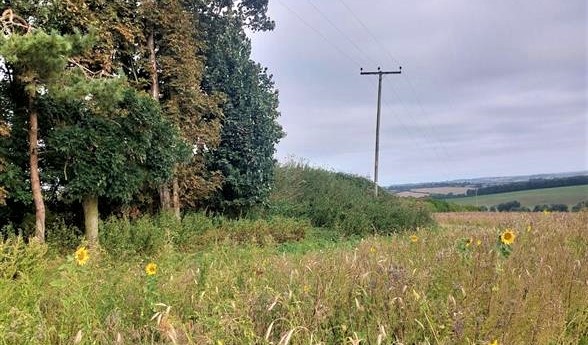An historic monument near the Wiltshire village of Coombe Bissett has been enhanced thanks to a collaborative project between Scottish and Southern Electricity Networks (SSEN), Historic England, Wessex Archaeology and a local landowner.
A section of the overhead network, supplying power to homes and businesses in the Homington and Rockbourne areas, has been realigned off the Bowl Barrow on Homington Down, to ensure the preservation of the ancient landscape, while reinforcing the power supply to some 330 local residents.
Bowl barrows are funerary monuments dating from the Late Neolithic period to the Late Bronze Age (2400-1500 BC). Often occupying prominent locations, they are important archaeological monuments in the modern landscape that provide information on the beliefs, social organisation and environment of prehistoric communities.
The works undertaken by SSEN centred on the relocation of an old pole, supporting the overhead line between the villages of Homington and Rockbourne, to a new position outside the protected historic area. With no archaeological finds unearthed during the planning of the project, the new pole was safely located to the north of the Bowl Barrow, under the supervision of Wessex Archaeology.
John O’Reilly, SSEN’s Project Planner for the works said:
“This section of the overhead line was built several decades ago and didn’t take into account the historic significance of the area, or the integrity of the Scheduled Monument.
“Now, through better design and planning, we have been able to work with Historic England, Wessex Archaeology and a local landowner to preserve this feature for future generations.”
Kate Iles, Assistant Inspector of Ancient Monuments at Historic England said:
“Thanks to the close collaboration of everyone involved, the electricity pole has now been permanently removed from the bowl barrow on Homington Down. It’s great that this project has helped to restore the monument and improved the way it is experienced today.”
This project is part of SSEN’s ongoing commitment to respecting and protecting historical sites while ensuring essential infrastructure is in place to keep power flowing to homes and businesses through a resilient and flexible network that meets their needs now and for decades to come.
